Since February is National Gum Disease Awareness Month, we thought it was a good time to start a conversation about periodontitis, more commonly known as gum disease. When it comes to gum disease, you might not realize that what you consider “normal” for your gums might actually be signs of trouble.
Can you have gum disease and not know it? Let’s take a closer look at some common signs and risks of gum disease, as well as treatments and prevention to ensure you maintain optimum gum health.
What Is Gum Disease?
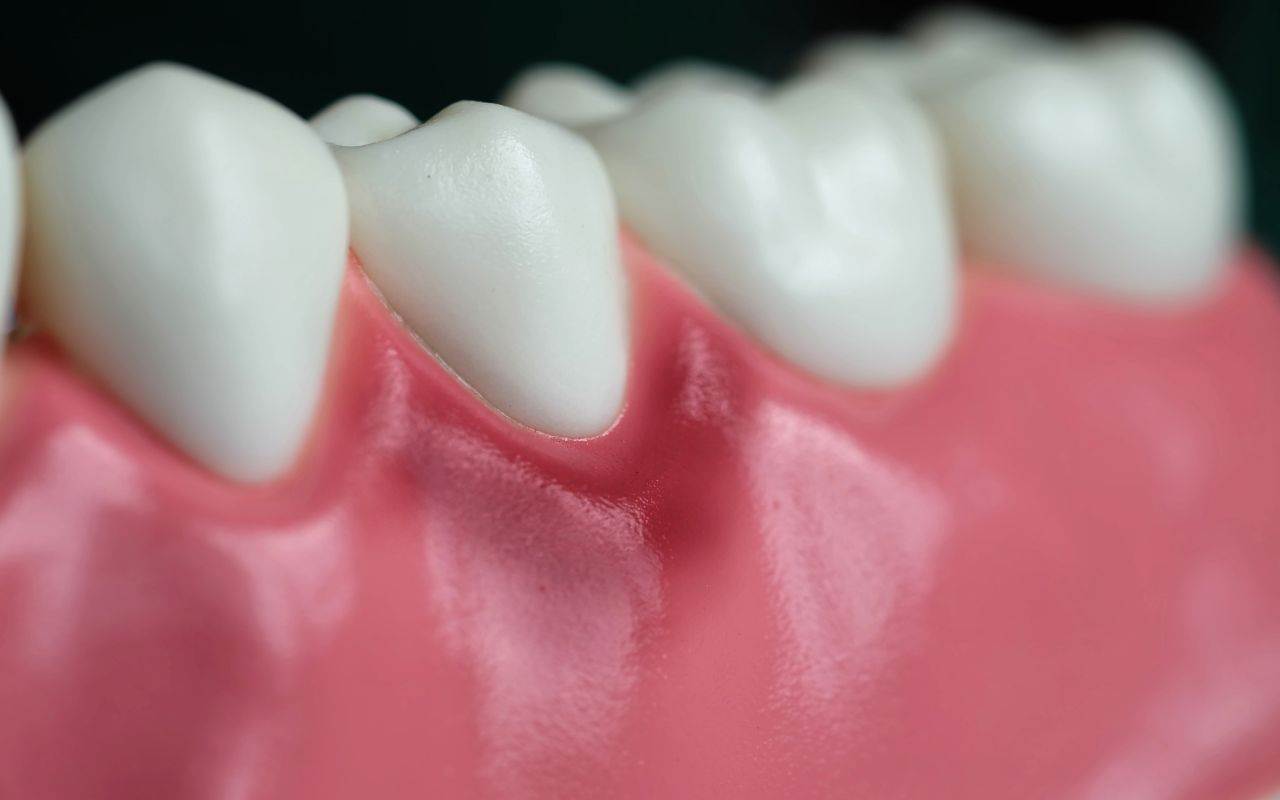
Gum disease, also known as periodontal disease, is the inflammation or infection of your gums. There are four stages of gum disease, with each stage becoming more serious and increasing the risk of pain, infection, and tooth loss. The good news is, when caught early you can completely reverse gum disease. In fact, with proper brushing and flossing, you not only keep it from returning but also prevent it from occurring at all.
What Are The Early Symptoms Of Gum Disease?
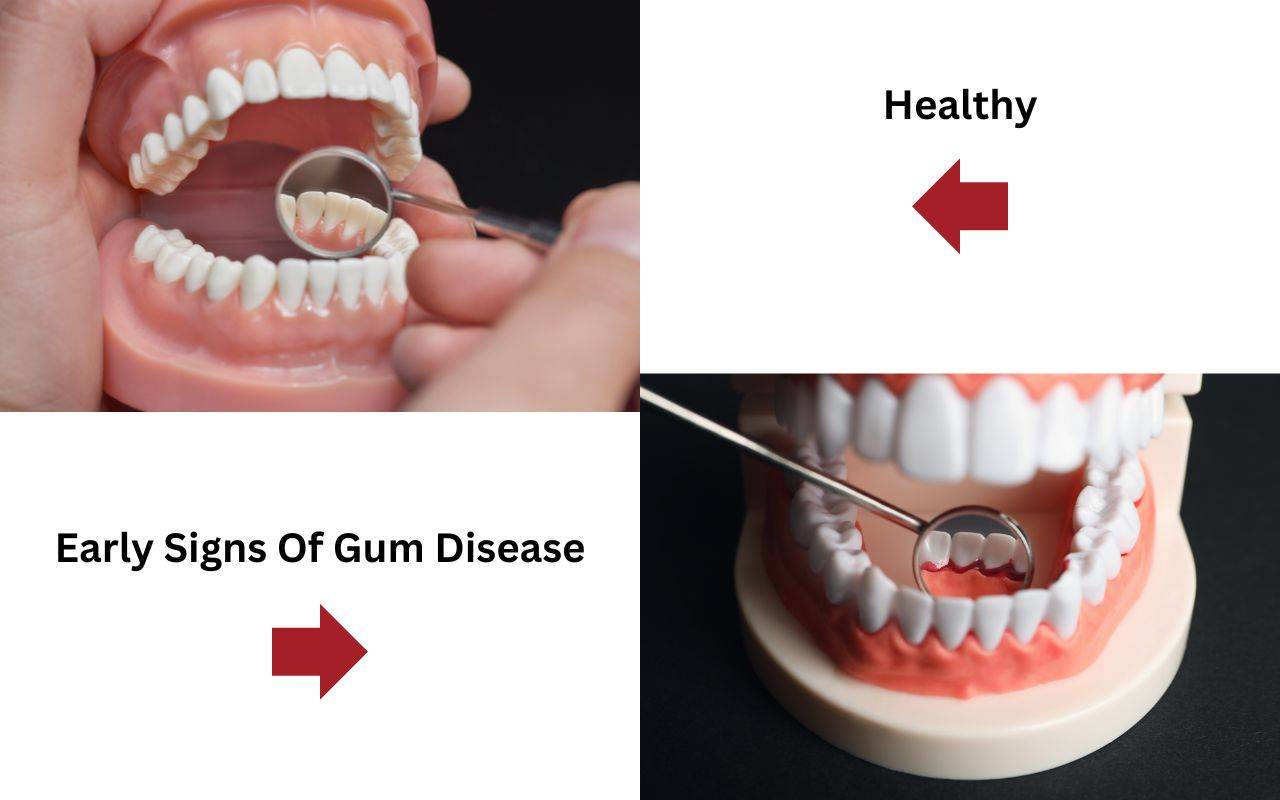
The symptoms and signs of gum disease vary based on the stage. However, early signs of gum disease that call for a dental visit include:
- Reddish, purple colour to your gums
- Bleeding
- Tenderness
- Bad breath and/or an unpleasant taste
To put things in perspective, healthy gums are firm, pinkish in colour, and don’t bleed. So, if your gums don’t fit this description, or you experience any of the above symptoms, it’s best to set up an appointment with your dentist.
What Are The Stages Of Gum Disease?
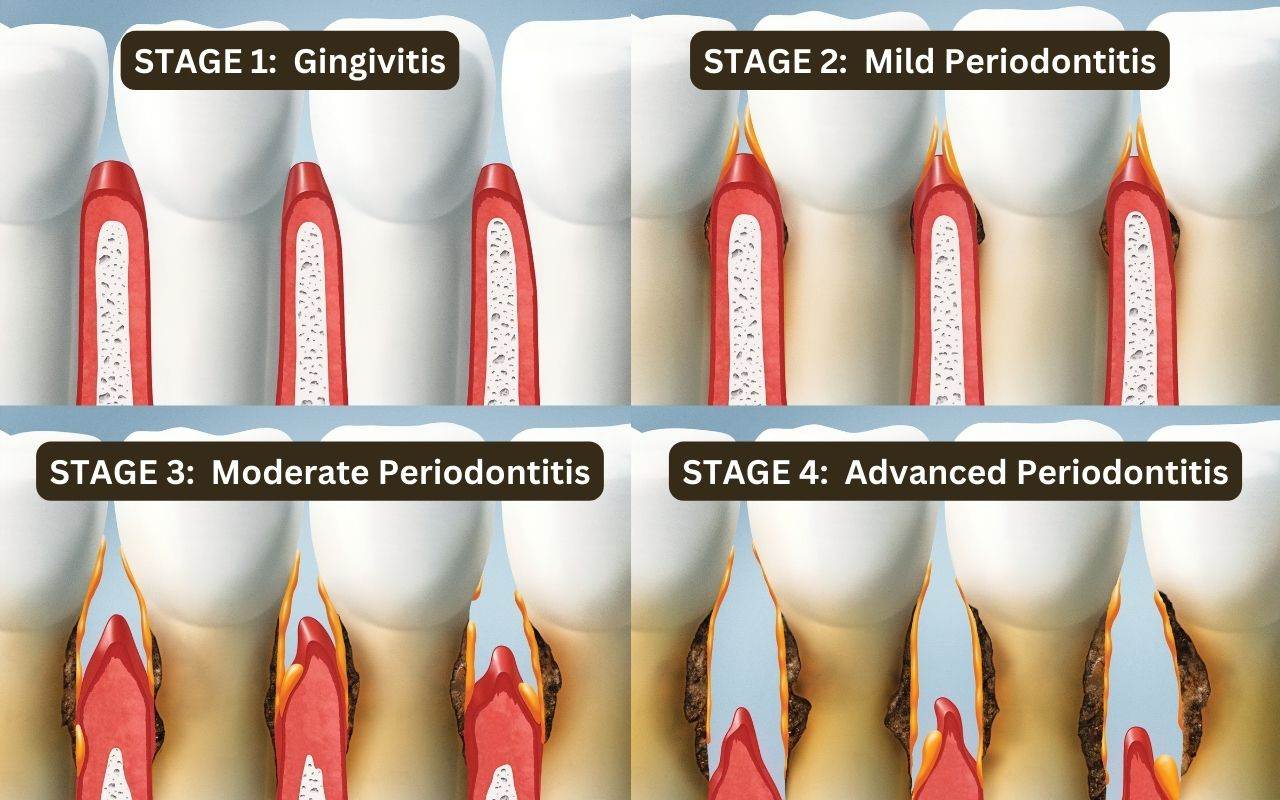
The four stages of periodontal disease include:
- Gingivitis: Experiencing a darker colour, bleeding, and tenderness in the gums are the first signs of periodontal disease. Acting fast at this stage ensures your gum disease doesn’t progress.
- Mild periodontitis: At this stage, bacteria reaches below the gumline, impacting your jawbone. Symptoms include deep pockets and separation of your gums from the teeth, allowing plaque and bacteria to hide. At this stage, you can no longer “self-treat” gum disease with a toothbrush and floss.
- Moderate periodontitis: The progression of bacteria leads to erosion of the elements that hold your teeth in place, including the ligaments, soft tissues, and bone. Symptoms include gum pus, bad breath, and pain.
- Advanced periodontitis: The final stage leads to further bone loss with the likelihood you will eventually lose teeth and experience a serious infection that can spread throughout your body.
How Serious Is Gum Disease?
In most cases, you can reverse the progression of periodontitis back into the mild stage to eliminate the risk of gum disease becoming more serious. Advancement into the moderate stage, however, requires more serious treatments to stop the disease from worsening. However, moderate to advanced periodontitis leads to serious infection and bone loss that can’t be reversed. Luckily, treatment can stop the progression and reduce the risk of tooth loss.
What Causes Gum Disease And What Are The Risk Factors?

Gum disease is all about plaque build-up, which contains bacteria that cause infection. Therefore, poor oral health greatly increases your risks, along with the following factors:
- Tobacco use
- Diabetes
- Autoimmune diseases
- Hormonal changes
- Stress
- Genetics/family history of gum disease
- Heart disease
Gum disease is also contagious because the bacteria can pass from person to person through saliva. This includes prolonged kissing, kissing a baby or child on the mouth, sharing utensils or toothbrushes, or cleaning off a baby’s pacifier or bottle nipple with your mouth.
Can You Have Gum Disease And Not Even Know It?
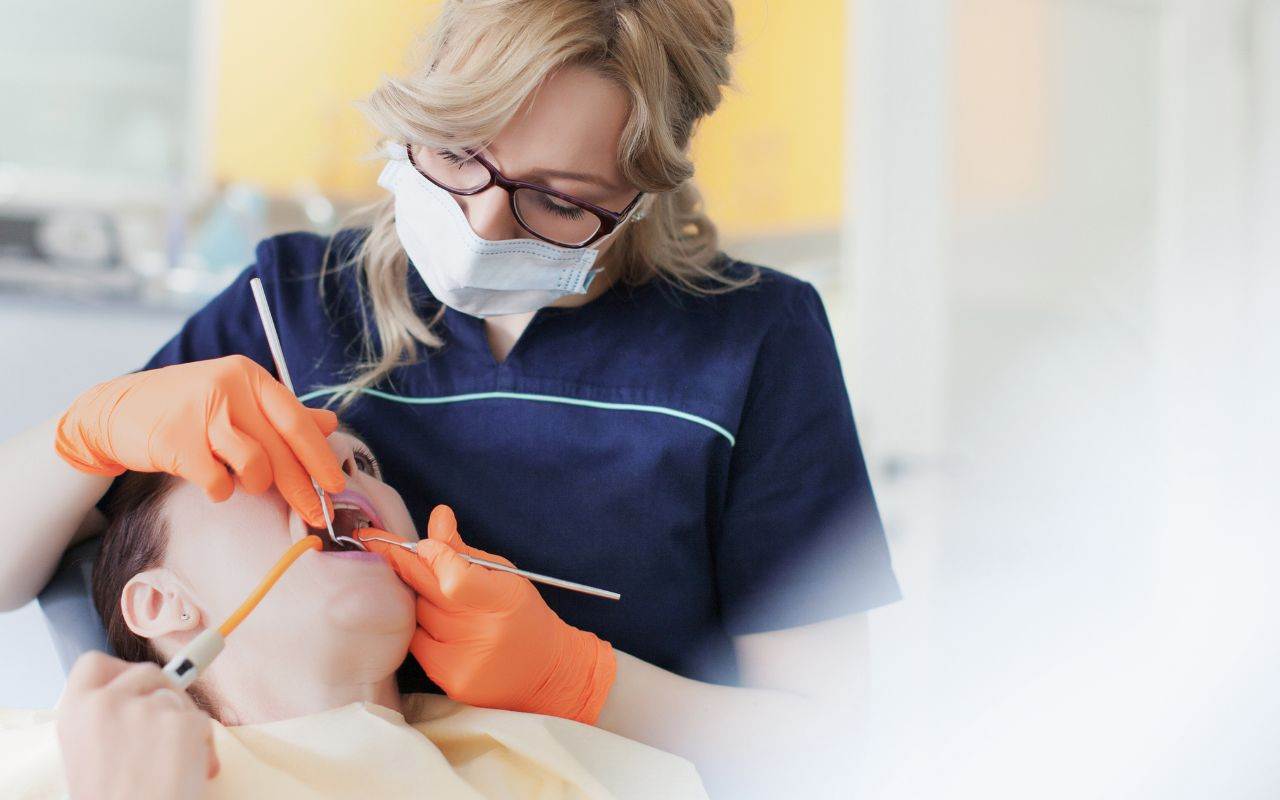
If you feel you may have gum disease based on the common symptoms listed above, you can book an assessment with your dentist. This is one of the reasons regular check-ups are so important, as your dentist checks for signs of gum disease to catch it early. In the later stages, it is common to take dental x-rays to look for bone loss.
What Happens If I Have Gum Disease?

Once gum disease is diagnosed, your dentist will create a treatment plan. In the early stages, this often includes reversing the condition with an improved and more strict oral hygiene regime. In some cases, you might be provided with special tools to improve plaque removal or a prescription mouthwash. Professional cleaning with scaling and root planing is also common to reach deeper beneath the gums in order to treat Stage 2 gum disease.
How To Treat Gum Disease
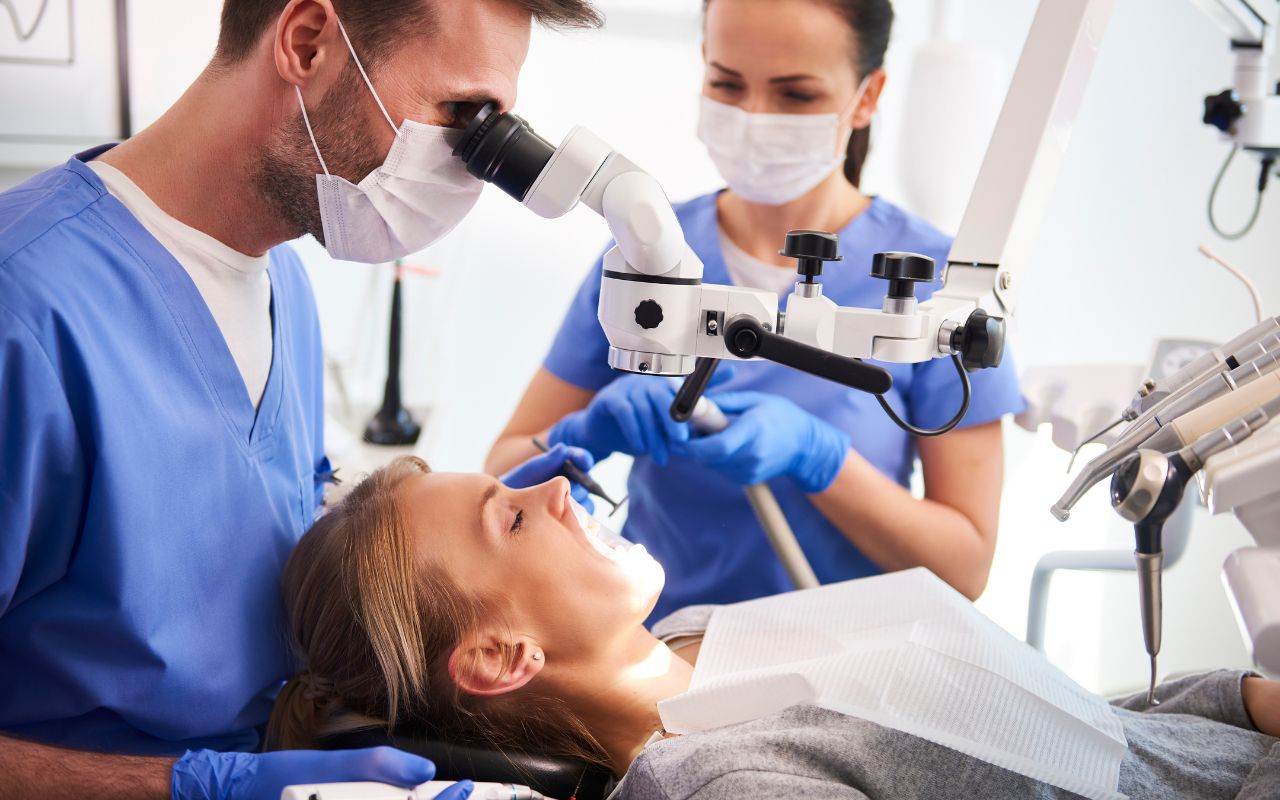
The more advanced the stage, the more complicated and costly the treatment for gum disease becomes, including:
- Pocket reduction surgery: This is common at the moderate to advanced stages where plaque and tartar are out of reach for hygienists. The treatment reaches under the gums, which requires an incision, allowing the periodontist to reach the tooth roots. They then clean your teeth, reposition your gums and stitch them into place. The use of lasers is becoming more common and tends to be more comfortable. LANAP (Laser-Assisted New Attachment Procedure) doesn’t require a scalpel to make the incision and can target the diseased tissue while keeping healthy tissue intact.
- Bone grafting: Bone loss in the more advanced stages is treated with bone grafting once the infection is eliminated. Bone grafting material is used to rebuild and repair bone erosion, allowing your body to naturally regenerate bone.
- Gum grafting: In this case, lost gum tissue is replaced to cover exposed roots and create a healthier gumline. Tissue is removed from the roof of your mouth and grafted to the damaged area.
Can Gum Disease Be Prevented?

The silly thing about gum disease is that it is completely preventable! Proper brushing and flossing in hand with regular dental cleanings and check-ups greatly reduce the risk, while ensuring those prone to gum disease receive professional recommendations to protect against it.
Therefore, proper oral hygiene is your number one defense against gum disease. Seeing your dentist regularly and discussing your health conditions and history also ensures your dentist addresses your risks. You’ll receive recommendations based on your condition whether it is more frequent professional cleanings, special tools to assist with flossing, or a prescription mouthwash to tackle bacteria.
Can There Be Complications Of Gum Disease?
Unfortunately, without treatment, gum disease can only get worse. This increases the risk of infection, pain, bone loss and, ultimately, tooth loss. Also, gum disease impacts your overall health and has been linked to dementia, heart disease, stroke, and the worsening effects of diabetes.
The lesson learned here is that good oral care routines and regular dental checkups help prevent gum disease. You can recognize the signs of early gingivitis to get treatment before it progresses to the irreversible stages of periodontitis.
Call Bradford Family Dentistry today at 905-775-5307, or click here to request an appointment.
